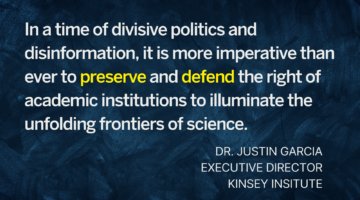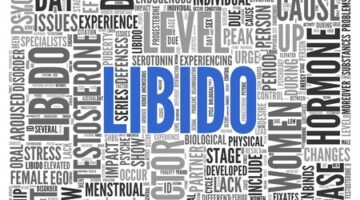Sex Question Friday: Where Does Asexuality Come From?
May 23, 2014 by Justin Lehmiller
Every Friday on the blog, I answer people’s questions about sex, love, and relationships. This week’s question comes from a reader who wanted to know more about the origin of asexuality:
“What are your thoughts on asexuality? I’ve thought of sex as a biological imperative and sexual desire as the natural vehicle to get us to have sex. From that standpoint asexuality strikes me as a medical condition or possibly the side effect of a physical or psychological trauma or of medication (like SSRIs). Of course I could be completely wrong, which is why I’m asking.”
Scientists don’t fully understand where asexuality comes from. Of course, we aren’t completely sure where any other sexual orientation comes from either! However, there is a growing body of research out there that can speak to your question.
For starters, you mentioned the notion of sexual desire as a “biological imperative,” and I get where you’re coming from with this. On the surface, asexuality would appear to be an evolutionary disadvantage—a lack of desire for partnered sex would probably hamper one’s odds of sexually reproducing. However, when you look at some of the factors that asexuality is correlated with, it becomes possible to argue that there might be some circumstances under which asexuality could potentially be an evolved adaptation. Let me explain. Some research has found that asexuality is correlated with lower socio-economic status and shorter stature [1]. To me, such correlates raise the possibility that perhaps asexuality is more likely to manifest in environments where resources are scarce. To the extent that this is true, asexuality could theoretically assist in survival by constraining population growth and thereby reducing strain on resources. Of course, this is just a hypothesis and I have no idea whether it holds up. I simply mention this because it’s worth considering the possibility that perhaps asexuality has a non-obvious evolutionary purpose.
Related to this, it is also worth mentioning that a new study has found that asexuality is associated with a lot of the same biological factors as homosexuality, including handedness (asexuals are more likely to be left-handed, as are gay men and lesbians) and birth order (asexual men are more likely to be born later than their siblings, just like gay men) [2]. This provides further support for the idea that there may be a complex biological pathway to asexuality that begins very early on and argues against the idea that asexuality is the product of some medication side effect.
Asexuality does not appear to be a function of sexual arousal difficulties or traumatic sexual experiences either. Consider this: in a recent study, asexual and non-asexual women were hooked up to devices that recorded their genital arousal while they viewed various types of pornography [3]. The researchers found that asexual and non-asexual women were indistinguishable in their genital arousal patterns during exposure to porn. In other words, asexual women had fully functional genitals and their bodies were responsive to sexual stimuli. The primary difference observed was that asexual women did not report an increase in desire for sex when they were genitally aroused, whereas the non-asexual women did. Thus, asexuals do not psychologically experience genital arousal in the same way.
It is also worth noting that, when watching pornography, asexual women did not report any change in their emotional state—neither positive nor negative affect increased or decreased. This suggests that asexual women are not inherently fearful of or averse to sex; instead, they appear to feel more indifferent about it.
While much more research on the origin of asexuality is needed, it seems clear from the accumulated body of evidence so far that asexuality is not the result of a medical issue, sexual arousal problem, or fear of sex. Instead, asexuality appears to be just another natural variation in human sexuality, not a sexual dysfunction.
Want to learn more about Sex and Psychology? Click here for more from the blog or here to listen to the podcast. Follow Sex and Psychology on Facebook, Twitter (@JustinLehmiller), or Reddit to receive updates. You can also follow Dr. Lehmiller on YouTube and Instagram.
[1] Bogaert, A. F. (2004). Asexuality: Prevalence and associated factors in a national probability sample. Journal of Sex Research, 41(3), 279-287.
[2] Yule, M. A., Brotto, L. A., & Gorzalka, B. B. (2014). Biological markers of asexuality: Handedness, birth order, and finger length ratios in self-identified asexual men and women. Archives of Sexual Behavior, 43(2), 299-310.
[3] Brotto, L. A., & Yule, M. A. (2011). Physiological and subjective sexual arousal in self-identified asexual women. Archives of Sexual Behavior, 40(4), 699-712.
Image Source: Wikimedia Commons
You Might Also Like:

Dr. Justin Lehmiller
Founder & Owner of Sex and PsychologyDr. Justin Lehmiller is a social psychologist and Research Fellow at The Kinsey Institute. He runs the Sex and Psychology blog and podcast and is author of the popular book Tell Me What You Want. Dr. Lehmiller is an award-winning educator, and a prolific researcher who has published more than 50 academic works.
Read full bio >


